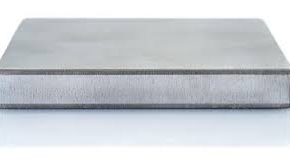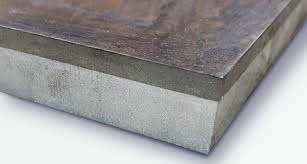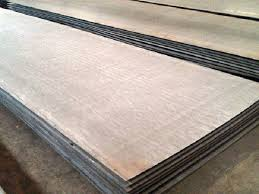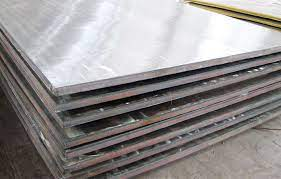- Home
- Products
- Elementary
- Boride Powder
- 3D Printing Powder
- Sulfide Powder
- Oxide Powder
- Carbide powder
- Nitride Powder
- Silicide Powder
- Hydride Powder
- Telluride Powder
- Selenide Powder
- Stearic Acid Series
- Phosphide Powder
- Nanoparticles
- Metal Alloy
- MAX Phase
- Lithium Battery Anode
- Surfactant
- Molecular sieves
- Concrete Admixtures
- News
- Answers
- Contact
- About
News
- 1
- 1
Preparation, performance and application of stainless steel clad plate
If you are looking for high-quality products, please feel free to contact us and send an inquiry, email: brad@ihpa.net
A stainless steel clad plate is a composite aluminum alloy panel made of a carbon steel bottom layer and a stainless steel plate cladding. Its main feature is the fusion of carbon steel and stainless steel plates resulting in a sturdy casting industry. It can carry out various production processes such as pressing, cold-formed steel, fiber optic metal laser cutting, electric welding, etc., and has excellent performance parameters.
The underlying material of stainless steel clad plates can use various carbon steels and special steels such as Q235B, Q345R, and 20R. The cladding material can be stainless steel plates of multiple specifications such as 304, 316L, 1Cr13 and duplex steel. The raw materials and thickness can be interchanged to ensure the satisfaction of different consumers.
Stainless steel composite plate not only has the deterioration resistance of stainless steel but also has the high-quality impact toughness and processing characteristics of carbon steel. It is a new type of chemical product. stainless steel clad plates have long been widely used in crude oil, chemical plants, the salt industry, water conservancy project construction, and other fields.
As a commodity for a conservation-oriented society, stainless steel clad plates reduce the consumption of precious metals and significantly reduce project budgets. The ultimate integration of low cost and features has excellent social and economic benefits.
How are stainless steel clad plates made? There are generally three production processes for stainless steel clad plates, namely industrial equipment composite, explosion composite, and rolled composite.

1. Industrial equipment complex
Generally used to directly produce stainless steel composite seamless steel pipes, while explosion cladding and rolling cladding are first to produce stainless steel clad plates, and then make composite steel or hot-roll or hot-roll into composite coils.
2. Rolling compound
This is also the dedicated professional capability adopted by Cheng Ming New Materials. After preparatory work such as blank assembly, the composite production process only needs to be produced on the regular rolling network, and the heating and rolling capabilities are used to achieve structural integration of the composite panels and furniture panels.
3. Explosive recombination
The explosive composite production process is first to prepare the composite board and furniture board, then install a layer of gunpowder on the composite board, and use the instantaneous high pressure and rapid destructive characteristics of the explosive explosion to ensure the solid casting integration of the metal solid layer.

Disadvantages of explosive recombination:
1. When the explosion occurs, it is as far away from a tall and tall city as possible. It is important that there is no person or building within 5 kilometers of the explosion;
2. There are very strict regulations on the storage and transportation of gunpowder and explosives;
3. Limited by temperature and other necessary conditions for processing technology, the productivity of explosive compounding could be higher.
Compared with explosive lamination, rolling lamination has safe performance and more precise shape and size precision, excellent fusion surface quality and fused composite characteristics. Therefore, rolled stainless steel composite plates have better technical parameters and are more conducive to further production, processing and application.
stainless steel clad plates are structural and functional materials, which have both the functionality of the mixed layer and the base layer's strong and tough combination properties.
Structural steel: also called base material, ensures the toughness and strength of stainless steel clad plates.
Functional steel: Also known as cladding materials, it gives more characteristics to stainless steel clad plates. Such as corrosion resistance provided by stainless steel, nickel and alloys, titanium and titanium alloys, wear resistance provided by wear-resistant steel and martensitic stainless steel.

Disadvantages of explosive recombination:
1. The explosion must be far away from the city, and there must be no people or buildings within 5 kilometers of the explosion center;
2. There are very strict requirements for the storage and transportation of explosives and detonators;
3. Limited by weather and other process conditions, the production efficiency of explosive compounding is low.
Compared with explosive lamination, rolling lamination is not only safer but also has more precise dimensional accuracy, excellent joint surface quality and blended composite performance. Therefore, the rolled stainless steel composite plate has better performance and is more conducive to further processing and application.
Application areas
Large construction such as highway construction, railway ships, environmental protection equipment, petrochemical industry, storage tanks, bridge manufacturing, etc.
Supplier
TRUNNANO is a supplier of copper clad steel materials with over 12 years experience in nano-building energy conservation and nanotechnology development. It accepts payment via Credit Card, T/T, West Union and Paypal. Trunnano will ship the goods to customers overseas through FedEx, DHL, by air, or by sea. If you are looking for high-quality copper clad steel materials please feel free to contact us and send an inquiry.
Inquiry us
PREVIOUS NEWS
What is MAX MXene phase material
NEXT NEWS
